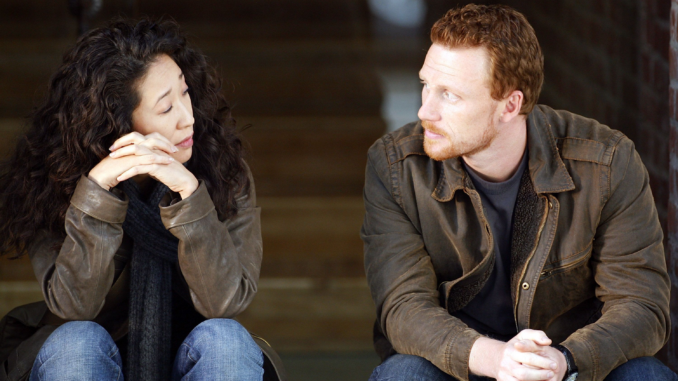
When we think of Grey’s Anatomy, what often comes to mind is its iconic moments of love, betrayal, and medical drama. However, what truly makes the show stand out—and what resonates with viewers more than anything else—is its depiction of grief. Grey’s Anatomy isn’t just about life-saving surgeries and romantic entanglements. It’s a deep exploration of loss, healing, and how grief can shape the people we become. The show’s portrayal of grief isn’t just emotional—it’s almost artistic in its depth, complexity, and rawness.
Grief in Grey’s Anatomy is ineffable—impossible to capture fully, yet deeply felt by anyone who’s ever loved or lost. But what makes this depiction so compelling, so undeniably beautiful, is the way it captures the range of emotions that come with loss, making it resonate universally. Let’s take a closer look at how Grey’s Anatomy weaves grief into its narrative fabric and why it makes the pain feel so poignant.
Understanding Grief in the Context of Grey’s Anatomy
Before we dive into the heart of it, it’s important to understand what grief means in the context of Grey’s Anatomy. The show, at its core, explores the lives of doctors—people who are constantly exposed to the fragility of life. This profession alone makes grief a central theme, as medical professionals often face life-or-death situations that can leave a lasting emotional impact.
The Nature of Grief on the Show
Grey’s Anatomy doesn’t shy away from the heavy, complicated nature of grief. Rather than providing easy resolutions or neatly wrapped-up narratives, the show allows grief to unfold in its messiness. Whether it’s the death of a loved one, the collapse of a relationship, or even a personal trauma, the characters experience loss in ways that feel real and unfiltered.
Grief as a Catalyst for Change
For many characters on the show, grief isn’t just something they endure—it’s a force that propels them forward, changing their lives and relationships. It challenges their values, reshapes their perceptions of the world, and pushes them to evolve in ways they never imagined.
The Beauty of Grief: How the Show Transforms Pain into Art
While grief is inherently painful, Grey’s Anatomy has a unique ability to portray it in a way that feels beautiful and profound. It’s not about glorifying pain—it’s about finding the beauty in the way grief shapes us. The show’s ability to transform heartache into something transcendent is part of what makes its depiction of grief so special.
The Cinematic Approach to Grief
One of the most compelling aspects of Grey’s Anatomy’s portrayal of grief is its cinematic execution. The way the show uses lighting, music, and visual storytelling often amplifies the emotional weight of a scene. A quiet moment between characters, a lingering look, or a carefully timed flashback can carry the emotional depth that words alone can’t convey. The visual artistry of these scenes gives the grief a weight that sticks with the viewer long after the episode ends.
The Power of Silence in Grief
Often, the most poignant moments of grief in Grey’s Anatomy come without words. There’s power in silence—the kind where characters don’t need to say anything for their pain to be understood. A soft touch, a lingering gaze, or a silent hug can speak volumes, making the viewer feel the characters’ grief in an almost visceral way.

Character Arcs Driven by Grief
Some of Grey’s Anatomy’s most beloved characters are defined by their relationship with grief. Their arcs often involve an evolving understanding of how loss shapes their identity, and the show is brilliant at exploring the complexities of how grief manifests differently for everyone.
Meredith Grey: The Heart of Grief
Meredith Grey, the show’s central character, offers one of the most powerful portrayals of grief. Having lost both her mother and her husband, Meredith’s journey through grief is long, complicated, and layered. Her struggles with loss echo in nearly every aspect of her life—from her relationship with her colleagues to her ability to be a mother.
Her character arc demonstrates how grief can be an ongoing process—one that never truly ends, but rather becomes a part of who you are. Grey’s Anatomy allows us to witness Meredith’s evolution as she learns to live with her grief, make peace with it, and eventually use it as a source of strength.
Cristina Yang: Grief Through Detachment
Cristina Yang’s journey is another fascinating exploration of grief. After the death of her best friend, Dr. Burke, and her eventual departure from Seattle, Cristina’s grief takes on a different shape: emotional detachment. She hides her feelings behind her career, refusing to allow grief to consume her. This arc explores a different side of grief—the ways in which people might shut down emotionally as a form of self-preservation.
George O’Malley: The Silent Struggles of Grief
George O’Malley’s tragic death is a significant turning point in Grey’s Anatomy, and the way his death is handled is deeply affecting. Grief doesn’t always have to be loud and dramatic. For George, his struggle with grief and mortality was quieter, more introspective, and painfully relatable. His character’s vulnerability in the face of loss made his death all the more heartbreaking for fans.
Alex Karev: Grief as Redemption
Alex Karev’s transformation over the course of the show is driven by the grief he feels over the loss of his family, his relationships, and the unresolved trauma of his past. For Alex, grief isn’t just an emotion—it’s a tool for redemption. His journey highlights how grief can force someone to look inward, reevaluate their choices, and ultimately transform themselves.
The Impact of Grief on Relationships
One of the most fascinating aspects of Grey’s Anatomy is how it explores the ripple effect grief has on relationships. Whether it’s romantic, familial, or professional, grief inevitably touches every relationship the characters have. It can tear people apart, bring them closer together, or change the way they relate to the world.
Grief as a Test of Friendship
Throughout the series, we see grief testing the friendships between characters. Whether it’s the bonds between Meredith and Cristina or the camaraderie between the residents, grief forces these characters to confront the limitations of their relationships and the depth of their emotional connections.
In many ways, grief becomes a vehicle for deepening these relationships. It shows us that the beauty of friendship isn’t just in the good times, but in how we show up for each other during moments of profound loss.
Romantic Relationships Tested by Loss
In Grey’s Anatomy, grief is often a catalyst for romantic growth or dissolution. Couples like Meredith and Derek, or even Alex and Izzie, experience shifts in their dynamics due to loss. The show doesn’t sugarcoat the impact that grief has on love—sometimes it strengthens bonds, and sometimes it causes them to fracture. It’s raw, honest, and incredibly relatable.
Grief’s Role in Healing and Growth
Grief is not just about pain; it’s also about growth and healing. Grey’s Anatomy beautifully captures this duality by showing how characters emerge from their grief transformed. Whether it’s Meredith finding peace with her past or Alex finally confronting his emotional baggage, grief becomes a necessary part of their emotional and spiritual journey.
Healing Through Helping Others
In the world of Grey’s Anatomy, one of the most cathartic ways to heal from grief is to help others. As doctors, the characters often turn to their patients and colleagues to channel their grief into acts of compassion and healing. It’s in these moments of selflessness that characters find the strength to move forward and reclaim their sense of purpose.
The Healing Power of Time
While Grey’s Anatomy never minimizes the pain of grief, it also shows that time can be a powerful healer. As characters progress through their emotional struggles, we see them slowly find ways to live with their grief, rather than be consumed by it. This portrayal provides viewers with a sense of hope, even amidst the darkest moments.
Conclusion: The Lasting Beauty of Grief on Grey’s Anatomy
The beauty of grief on Grey’s Anatomy isn’t in its easy answers or quick fixes—it’s in its complexity, its messiness, and its inevitability. The show has found a way to make grief not just a part of the narrative, but a central theme that drives character development, relationships, and even healing. It’s the ineffable beauty of grief that makes Grey’s Anatomy so emotionally resonant and deeply human.
For anyone who’s ever experienced loss, the show offers a raw, authentic portrayal of grief that is hard to ignore. Grey’s Anatomy shows us that while grief can tear us apart, it can also make us stronger, more empathetic, and more connected to the world around us. In this way, the show transforms grief into something both heartbreaking and beautiful—an emotional experience that sticks with you long after the screen fades to black.
FAQs
1. How does Grey’s Anatomy portray the impact of grief on relationships?
Grey’s Anatomy illustrates how grief tests relationships, whether romantic or platonic, by revealing vulnerabilities and driving characters to either grow closer or drift apart. Grief can deepen bonds, but it can also strain them in unexpected ways.
2. Is Meredith Grey’s journey through grief realistic?
Yes, Meredith’s journey through grief feels incredibly authentic. Her experiences with loss—whether from her mother, Derek, or others—show the complexity and long-lasting nature of grief, rather than offering quick resolutions.
3. How does grief influence Alex Karev’s character?
Alex’s grief transforms him throughout the series. It acts as a catalyst for self-examination, redemption, and personal growth. His journey shows that grief can lead to healing, but also demands change.
4. Does Grey’s Anatomy glorify grief?
While Grey’s Anatomy explores grief with emotional intensity, it doesn’t glorify it. The show emphasizes the raw, painful aspects of grief, but also highlights its role in personal growth, healing, and connection with others.
5. What role does grief play in the healing process on the show?
Grief on Grey’s Anatomy is shown as a necessary part of healing. While painful, it becomes a driving force for emotional growth, reconciliation, and finding new purpose, especially for characters who learn to use their grief to help others.
